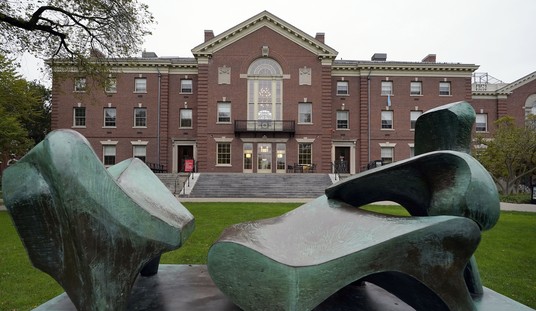We’ve spent a lot of time focusing on illegal immigration policy, both from an enforcement standpoint and from a welfare perspective. It’s also important to delve into our current legal immigration process in preparation for any wholesale reforms of our broader system.
From listening to proponents of open borders, you would get the impression that we barely admit any new legal immigrants, and as such, the only practical way for people to come here is by breaking our laws. The reality is just the opposite. We have granted more people permanent legal resident status over the past 15 years than in any other period in American history, including the turn of the 20th century when the country was still relatively young and growing. Moreover, a massive share of the recent immigration has been from developing or third world countries, particularly the very native countries of most illegal immigrants.
It would be wise for lawmakers to begin studying the annual immigration yearbook from the DHS. On page 5, you can find the total number of entrants obtaining LPR status every year. While historically, we have admitted between 300,000 and 600,000 new permanent legal residents every year (this has nothing to do with temporary worker visas), over the past decade we have accepted over 1 million new immigrants almost every year. During the ‘90s we admitted 9.7 million new immigrants and during this past decade we let in 10.3 million new immigrants, smashing the previous record of 8.2 million during the great decade of immigration from 1900-1909. Again, there is no way someone can reasonably suggest that this is restrictionist.
From which countries have we been accepting new immigrants in recent years?
Here is a list of major countries and regions that comprise the lion’s share of our legal immigrants over the past decade and in 2011. The numbers were compiled from the DHS immigration yearbook.
|
Country/Region |
2011 Numbers |
2011% |
2000-2009 Numbers |
2000-2009 % |
|
Latin America |
403,771 |
38% |
4,205,180 |
40.80% |
|
Mexico |
142,823 |
13.40% |
1,704,166 |
16.50% |
|
Africa |
97,429 |
9.20% |
759,734 |
7.30% |
| Europe (including Russia) |
90,712 |
8.50% |
1,349,609 |
13.10% |
|
China |
83,603 |
7.90% |
591,711 |
5.70% |
|
India |
66,331 |
6.20% |
590,464 |
5.70% |
|
Total |
1,062,040 |
10,299, 430 |
As you can see, we have been very generous in taking in many new LPRs from the developing world, particularly Latin America, and most notably, Mexico. The idea that we don’t accept enough immigrants from Latin America and Mexico is absurd. Going back to the fall of the Soviet Union, a major immigration-inducing event, we’ve accepted roughly 616,000 new LPRs from Russia. During the same time, we’ve had about 4.7 million new immigrants from Mexico, and about 10 million from Latin America at large.
To a large extent, our immigration system has been random. We bring in about 50,000 new immigrants every year through the diversity visa lottery, which expands the pool of immigration from third-world countries.
This random policy has consequences. As Senator Sessions has pointed out on numerous occasions, just 0.068 percent of visa applications were denied in 2011 on the grounds of being a welfare risk. Only about 10% are chosen based on their educational and occupational abilities. In the earlier part of the last century, this wasn’t a major problem because there wasn’t a robust welfare state saddling our children with debt. But with the welfare state in place, our current system is putting a strain on the welfare system. Here are some tidbits from a 2011 study conducted by the Center for Immigration Studies:
- In 2009 (based on data collected in 2010), 57 percent of households headed by an immigrant (legal and illegal) with children (under 18) used at least one welfare program, compared to 39 percent for native households with children.
- Households with children with the highest welfare use rates are those headed by immigrants from the Dominican Republic (82 percent), Mexico and Guatemala (75 percent), and Ecuador (70 percent). Those with the lowest use rates are from the United Kingdom (7 percent), India (19 percent), Canada (23 percent), and Korea (25 percent).
- Welfare use tends to be high for both new arrivals and established residents. In 2009, 60 percent of households with children headed by an immigrant who arrived in 2000 or later used at least one welfare program; for households headed by immigrants who arrived before 2000 it was 55 percent.
When policy-makers discuss reforming our legal immigration system, they need to take a look at the numbers of immigrants and the types of immigrants that we have let in over the past two decades. They need to decide if we are going to continue on the current trajectory, bring in even more low-skilled immigrants, or move towards a system that prioritizes higher-skilled immigrants. Conservatives need to decide if they desire to continue the Kennedy immigration paradigm from 1965 or not. Tossing out platitudes about being a nation of immigrants is not sufficient. We need to agree on which immigrants serve our national interests, and then make it easier for them to go through the process.
We need a substantive policy discussion on how to make the immigration system benefit the broader population as well as the immigrants coming to America. A system that focuses on high skilled immigrants and family unification would benefit everyone. This is something that can be done irrespective of how we deal with the divisive issue of those who came here illegally. Hence, piecemeal trumps ‘comprehensive.’
Cross-posted from The Madison Project












Join the conversation as a VIP Member